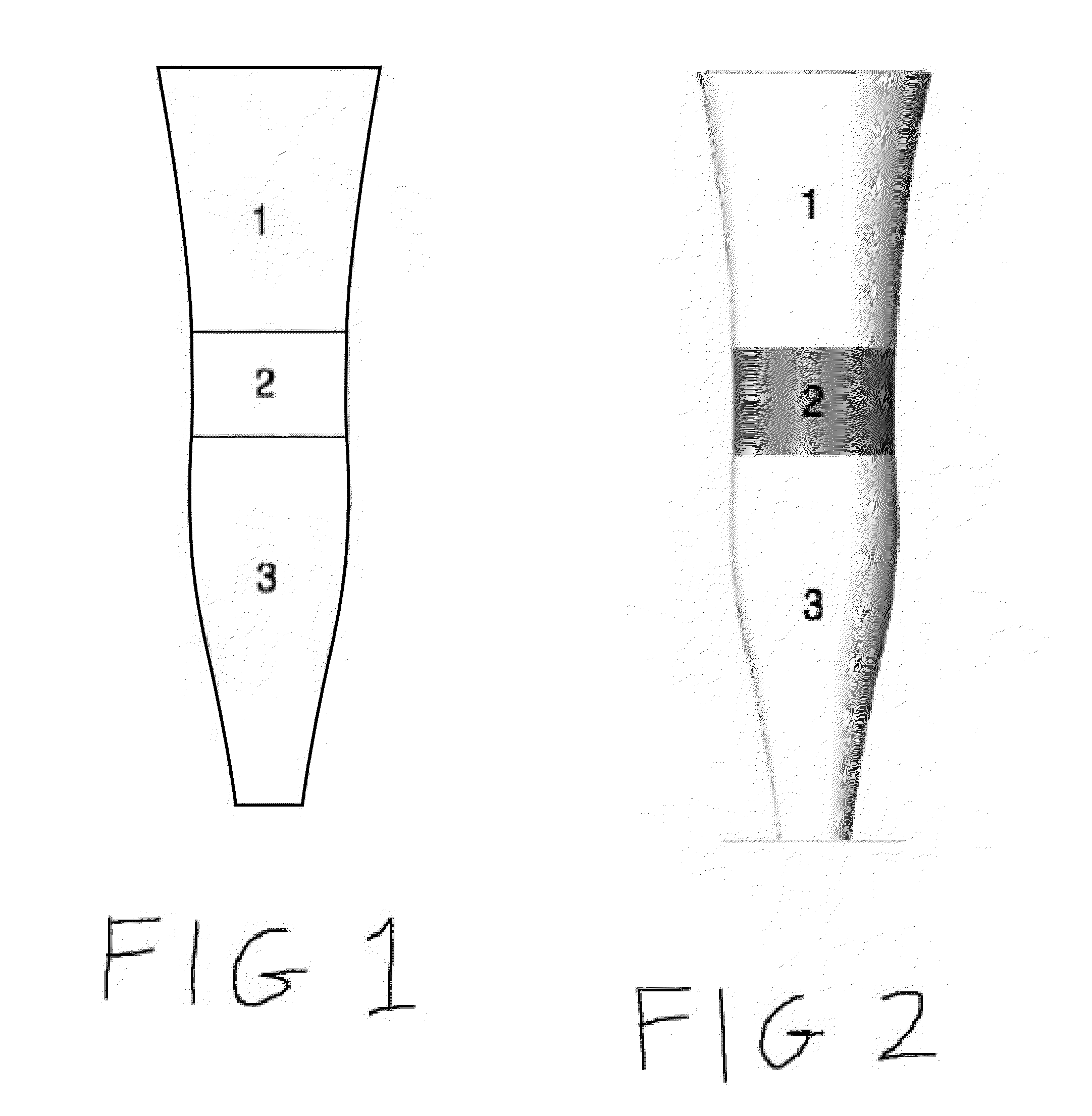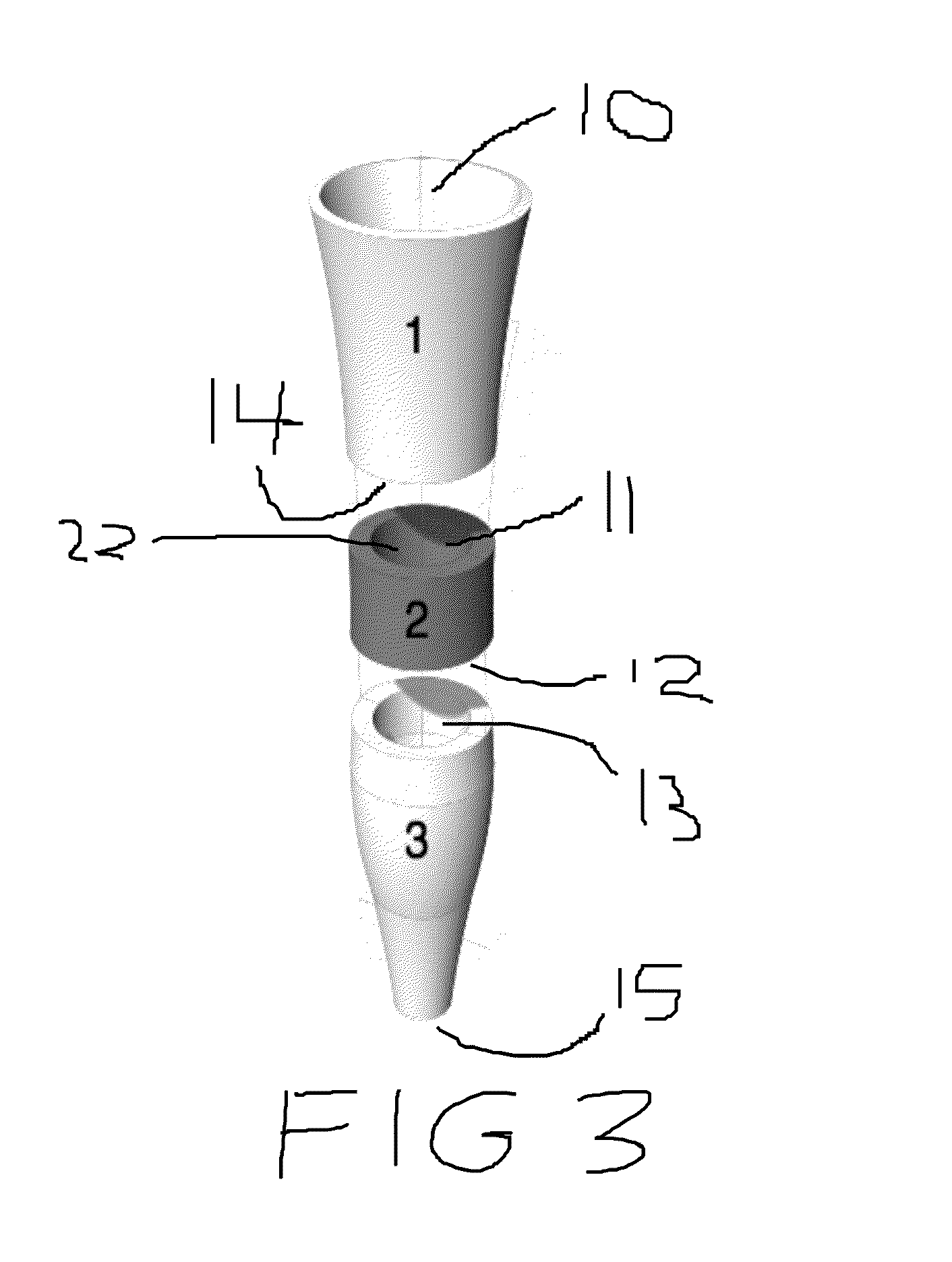Method for the selective removal of sulfites from beverages and modular apparatus for same
a technology of modular apparatus and sulfites, which is applied in the direction of filtration separation, other chemical processes, separation processes, etc., can solve the problems of unsatisfactory taste, severe health risks, and the ph of treated fluid can be significantly altered by ion exchange methods
- Summary
- Abstract
- Description
- Claims
- Application Information
AI Technical Summary
Benefits of technology
Problems solved by technology
Method used
Image
Examples
example 1
Preparation of Modified Solid Phase Material by Dialdehyde Treatment
[0084]Several food-grade polyacrylate macroporous resins presenting free amine functionality (shown in Table 1, below) were treated with an excess of 5% (v / v) aqueous solution of glutaraldehyde in 20 mM phosphate buffer (pH 8.0) and agitated at room temperature for 15 minutes or 60 minutes before rinsing extensively with at least 10 volumes of water by passing the water over the resin material in a fritted tube. Resin was rinsed with ethanol to assist desolvation and dried in air. Extent of amine functionalization with glutaraldehyde was assessed by boiling for 10 minutes a sample of treated solid phase material in an ethanolic solution of ninhydrin and monitoring a color change of the resin, which would indicate an incomplete conversion of amines. Functionalization was determined to be complete in most instances after 60 minutes of exposure to the glutaraldehyde solution.
TABLE 1ColorimetricSurfacePoreTest for Amine...
example 2
Sulfite Removal from Model Wine
[0087]A model wine solution comprised of 12% ethanol and 30 mM tartaric acid (pH 3.6) was supplemented with sodium metabisulfite (100 ppm) and analyzed by the aeration-oxidation method for sulfite quantitation to achieve a standard curve. Differing amounts of carbonyl-functionalized acrylate resin Purolite® 8310M, as prepared in Example 1, were added to 50 mL volumes of model wine solution (control) having a sulfite concentration of 100 ppm, stirred, and removed by filtration. Sample exposure to the non-ionic solid phase material was limited to 1 minute or total contact time. The filtrate was analyzed for free sulfite content, shown in Table 2, below, using the aeration-oxidation method described above.
TABLE 2SampleFree Sulfite (ppm)Control (no100resin)167 mg45333 mg
[0088]Thus, Example 2 shows that the food-safe, non-ionic, solid phase material of the disclosure is capable of removing free sulfites from a model wine solution, and that removal of free s...
example 3
Preparation of Modified Solid Phase Material by Dialdehyde Sucrose Treatment
[0089]Amino acrylate resin (Purolite® 8310M) was treated with a 50% solution of dialdehyde sucrose in a buffered phosphate solution of pH 8, 9.5, or 11 for three hours at room temperature. The treated resin was rinsed thoroughly with water and dried as in Example 1. The ninhydrin colorimetric test for amines, as described in Example 1, indicated partial carbonyl-functionalization at pH 8 and 9.5, which was visualized as an incomplete color change to blue for these samples. Complete resin functionalization was observed for the resin prepared at pH 11.
[0090]Thus, Example 3 demonstrates preparation of the food-safe, non-ionic, solid phase material of the disclosure through the modification of a commercially available resin with dialdehyde sucrose.
EXAMPLE 4
Sulfite Removal from Model Wine
[0091]Food-safe, non-ionic, solid phase material (Purolite® 8310M) as prepared in both Example 3 and Example 1 was exposed as s...
PUM
| Property | Measurement | Unit |
|---|---|---|
| pH | aaaaa | aaaaa |
| temperatures | aaaaa | aaaaa |
| concentration | aaaaa | aaaaa |
Abstract
Description
Claims
Application Information
 Login to View More
Login to View More - R&D
- Intellectual Property
- Life Sciences
- Materials
- Tech Scout
- Unparalleled Data Quality
- Higher Quality Content
- 60% Fewer Hallucinations
Browse by: Latest US Patents, China's latest patents, Technical Efficacy Thesaurus, Application Domain, Technology Topic, Popular Technical Reports.
© 2025 PatSnap. All rights reserved.Legal|Privacy policy|Modern Slavery Act Transparency Statement|Sitemap|About US| Contact US: help@patsnap.com



